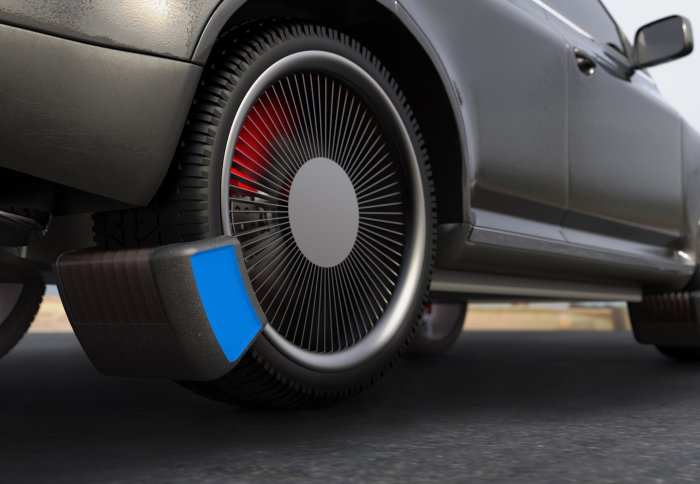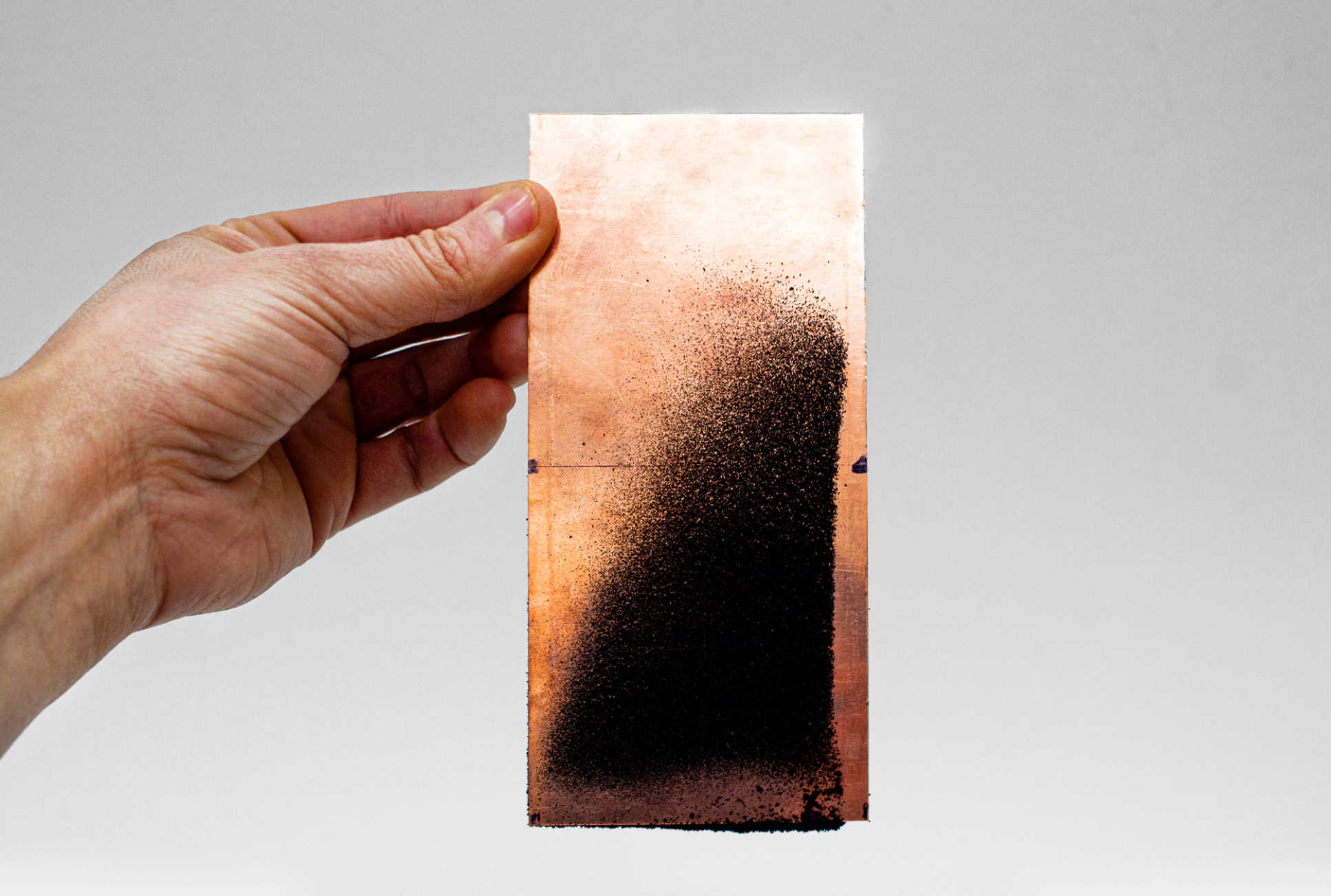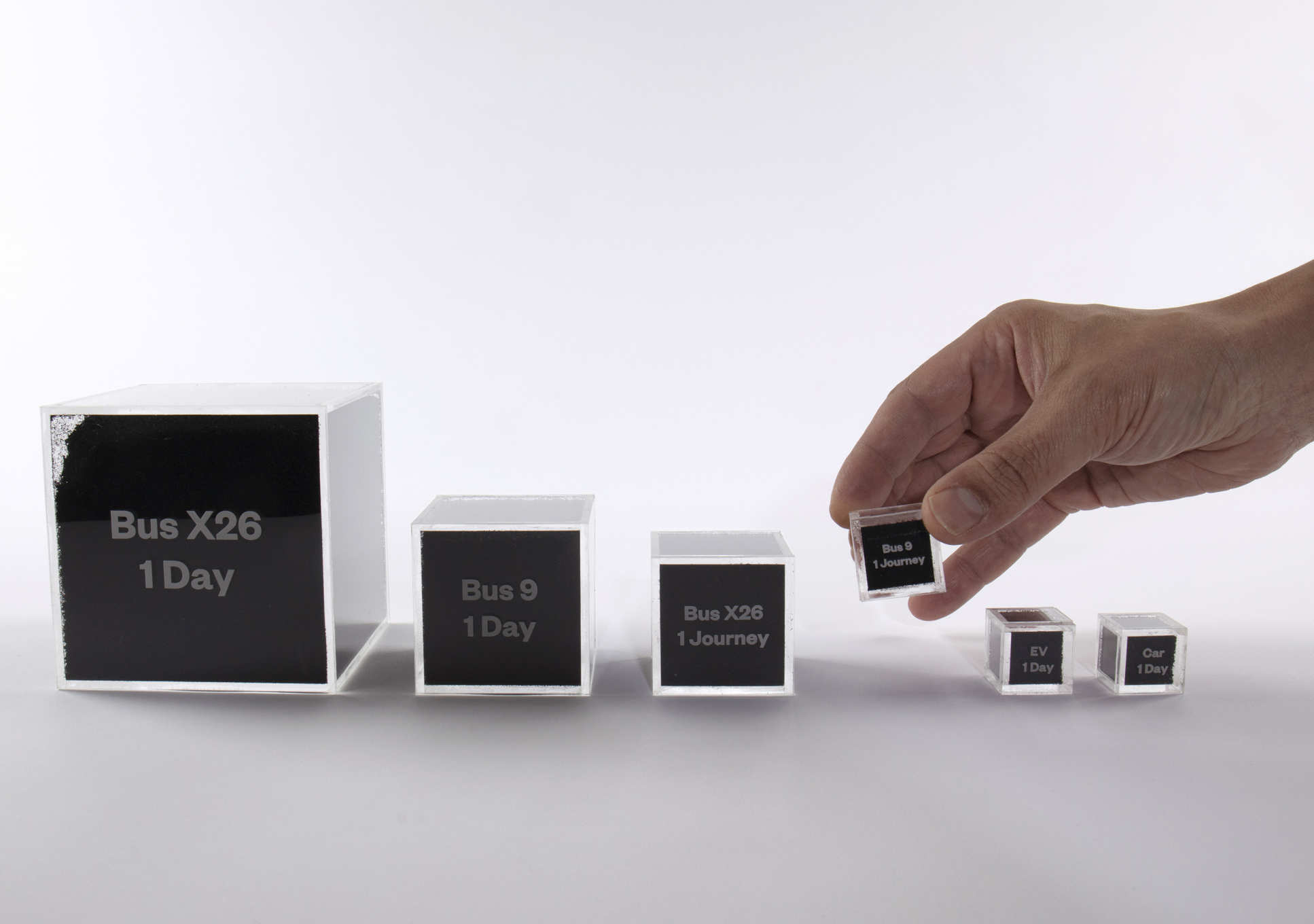World’s first device to capture harmful tyre particles invented by students

A visualisation of how the Tyre Collective's device would look fitted on a car
A group of Imperial students have invented a device to collect tyre particles from vehicles, a major contributor to the world’s air pollution.
Every time a vehicle brakes, accelerates or turns a corner, the tyres wear down and tiny particles become airborne, producing half a million tonnes of tyre particles annually in Europe alone.

Invisible pollution
The Tyre Collective aims to mitigate this invisible form of pollution by capturing them at the source. The team’s patent-pending device is fitted to the wheel and uses electrostatics to collect particles as they are emitted from the tyres. They claim that their prototype can collect 60% of all airborne particles from tyres, under a controlled environment on their test rig.
Once collected, the fragments can be reused in new tyres or other materials such as ink. The Tyre Collective have demonstrated this by printing their business cards using ink made from collected tyre dust.

Harmful effects
The World Health Organisation estimates that outdoor air pollution causes 4.2 million premature deaths worldwide per year. Most air pollution related deaths are linked to exposure to small particulate matter of 2.5 microns or less in diameter, which can penetrate deep into the respiratory system. Their harmful effects on health include cardiovascular and respiratory disease, as well as cancers.

Tyre-wear accounts for nearly half of road transport particulate emissions. They are also the second-largest micro-plastic pollutant in our oceans after single-use plastic, as fragments left on the road become washed into rivers and, ultimately, the sea.
Tyre dust
Greater adoption of electric vehicles will cause a reduction in exhaust emissions, but tyre dust will continue to pollute the air. The team estimate that tyre emissions may even increase, as electric vehicles are heavier due to the added battery weight.
The Tyre Collective is made up students from the Innovation Design Engineering MSc programme, offered jointly by Imperial College London and the Royal College of Art: Siobhan Anderson, Hanson Cheng, M Deepak Mallya, and Hugo Richardson. The team is supervised by Robert Shorten, Professor of Cyber Physical Systems Design in the Dyson School of Design Engineering.
The team are also participating in this year's Venture Catalyst Challenge, Imperial’s flagship entrepreneurial competition.
Image credits: The Tyre Collective
Article text (excluding photos or graphics) © Imperial College London.
Photos and graphics subject to third party copyright used with permission or © Imperial College London.
Reporter
Joanna Wilson
Communications Division